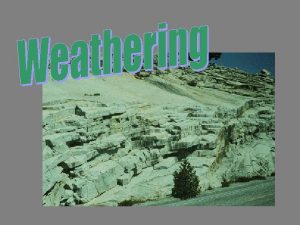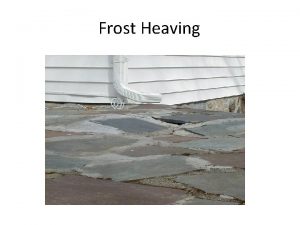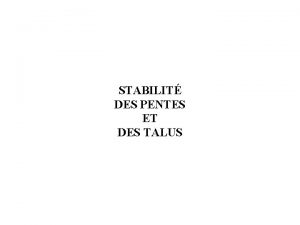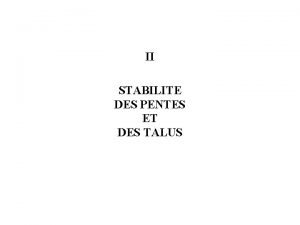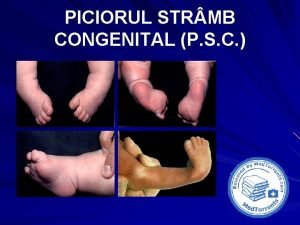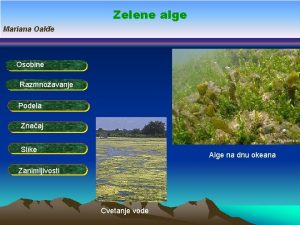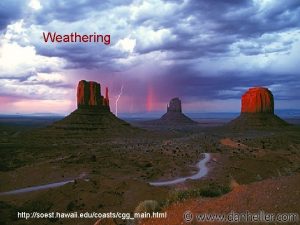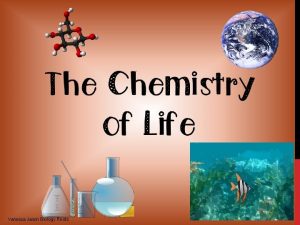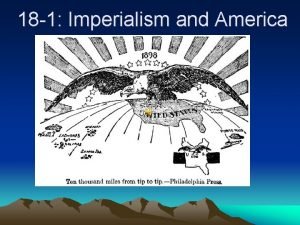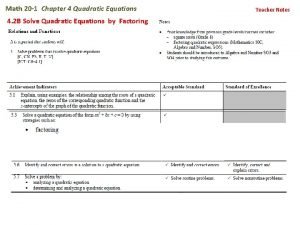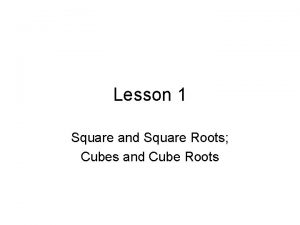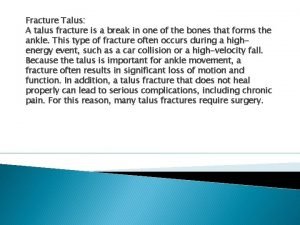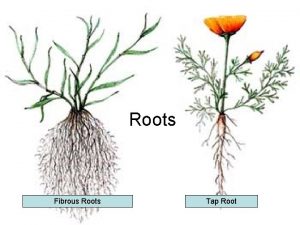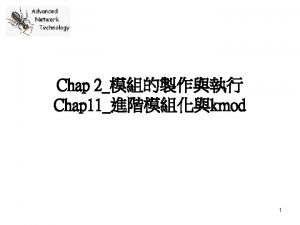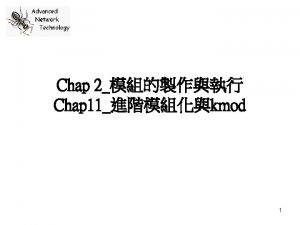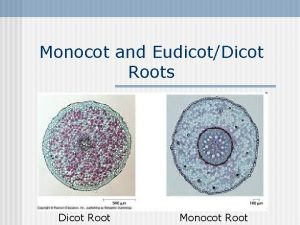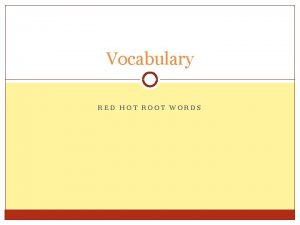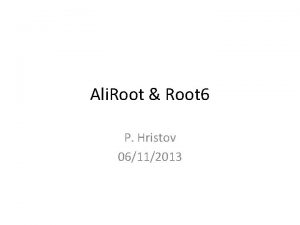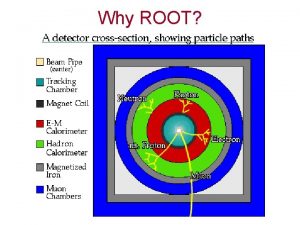Frost Heaving Plant Roots Root Pry Talus Water


















- Slides: 18

Frost Heaving

Plant Roots (Root Pry)

Talus

Water

Burrowing of Animals

Chemical Weathering • The process that breaks down rock through chemical changes. New substances can be formed. • Agents/Types of Chemical Weathering – Carbonic Acid-in rainwater. Forms caves/karst. – Oxidation (rust) – Living organisms (lichens/mosses) – Humic Acid-from decaying organic matter.

Carbonic Acid • in water weathers mainly limestone and dolomite by dissolving these rock types. 7

Carbon Dioxide CO 2 dissolves in rain water and creates carbonic acid Carbonic acid easily weathers limestone, dolomite, and marble

Effect of Acid Rain on Marble Statues

Oxygen • Iron combines with oxygen in the presence of water in a processes called oxidation • The product of oxidation is rust

Living Organisms • Lichens that grow on rocks produce weak acids that chemically weather rock

As the particles get smaller, the total surface area available for chemical weathering increases.

Soil: A product of weathering. Soil Composition - Soil has four major components: 1. Mineral matter, or broken-down rock 2. Organic matter or humus, which is the decayed remains of organisms 3. Water 4. Air. Soil Texture = refers to the proportions of different particle sizes. (Loam, Sand, Silt, Clay).

Soil Forms in Layers called a Soil Profile



What affects Soil Formation? 1. Time! More time means a thicker, more developed soil with clear horizons. 2. Climate! Probably has the larges affect on soil formation. Soil forms most quickly in humid, warm, wet climates. 3. Organisms. An abundance or lack of organisms can affect the physical and chemical nature of a soil.

Special Types of Soils Loess: Wind blown, angular silt that is usually the product of glaciers or wind blown volcanic ash. Caliche: Soil primarily made of carbonate (limestone) found in arid areas. Peat: Accumulation of partially decayed organic matter. Found in swamps/bogs Paleosol: A fossil soil.
 Heaving apex beat causes
Heaving apex beat causes Root pry
Root pry Root pry
Root pry Water and water and water water
Water and water and water water Summer of the seventeenth doll quotes
Summer of the seventeenth doll quotes Pry
Pry Talus 2/1
Talus 2/1 Talus 2/1
Talus 2/1 Piciorul stramb congenital
Piciorul stramb congenital Alge zanimljivosti
Alge zanimljivosti Global soil regions
Global soil regions Pied calcaneovalgus
Pied calcaneovalgus Građa algi
Građa algi Vanessa jason biology roots
Vanessa jason biology roots Is 125 a perfect square
Is 125 a perfect square Existence and uniqueness of square roots and cube roots
Existence and uniqueness of square roots and cube roots Economic roots of american imperialism
Economic roots of american imperialism Quadratic equation with roots
Quadratic equation with roots Perfect cube list
Perfect cube list

